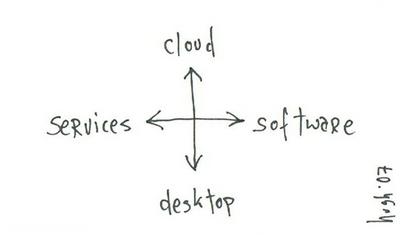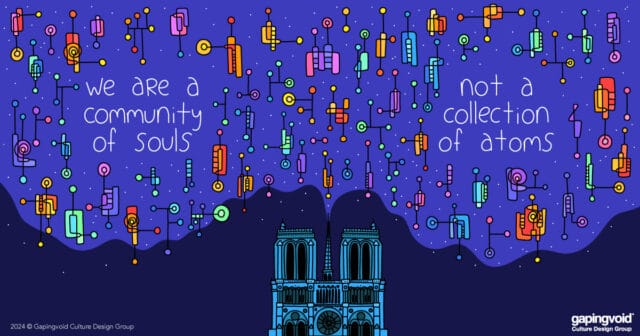
This cartoon is now in Steve Clayton’s collection. All to do with a conversation about Microsoft [Steve’s employer] that we were having a few weeks ago.
Basically, with software companies, you have a balance of two axes: 1. How much of your offering is software vs. How much of your offering is services 2. How much of your offering resides in “the cloud”, vs. How much of your offering resides on the desktop/handheld/personal object etc.
The ideal answer, of course, is that there’s no right answer. In theory one should be able to change at moment’s notice, and the software company should be able to accommodate said change at equally moment’s notice. As Steve says,
Microsoft wants to be right there in the middle. The user gets to pick where they wanna be. I wonder if I can get Ray Ozzie to use this 🙂
[This cartoon has been added to the Blue Monster cartoon series etc.]



